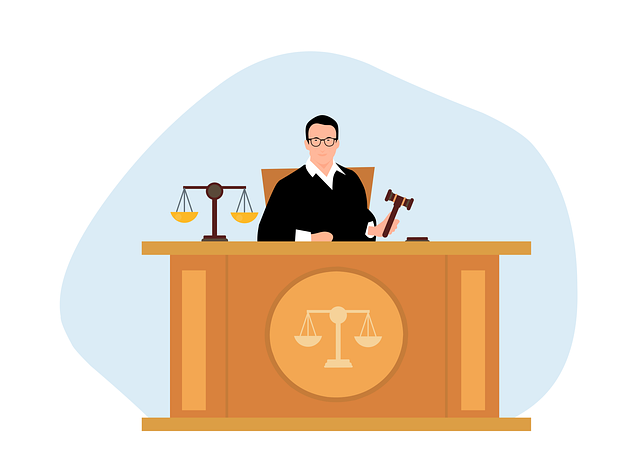In The Woodlands, The Woodlands Criminal Lawyer are essential navigators of plea bargaining, a critical component of the local criminal justice system. They protect clients' rights and secure favorable outcomes by negotiating reduced charges or lighter sentences in exchange for cooperation. The…….
Category: the woodlands criminal lawyer
Introduction
The Woodlands criminal lawyer is a vital component in the legal system, providing crucial support to individuals facing criminal charges. As the legal landscape continues to evolve, it’s essential to understand the role of a Woodlands criminal lawyer and their impact on the community. This article will delve into the world of Woodlands criminal lawyers, exploring their significance, global influence, economic considerations, technological advancements, policy and regulation, challenges and criticisms, case studies, and future prospects.
Understanding The-Woodlands-Criminal-Lawyer
A Woodlands criminal lawyer is a legal professional who specializes in defending individuals accused of crimes. Their primary objective is to protect the rights of their clients, ensuring that they receive fair treatment under the law. A Woodlands criminal lawyer must possess a deep understanding of the criminal justice system, as well as expertise in areas such as evidence gathering, witness testimony, and negotiation.
Historically, the role of a Woodlands criminal lawyer has evolved in response to societal changes and shifts in legal frameworks. In recent years, there has been an increased focus on rehabilitation and diversion programs, with lawyers playing a crucial role in advocating for their clients’ best interests.
Global Impact and Trends
The global influence of Woodlands criminal lawyers is significant, with many countries adopting similar legal structures and procedures. Key trends shaping the trajectory of Woodlands criminal law include:
| Trend | Description |
|---|---|
| Globalization | The increasing interconnectedness of societies has led to a rise in international crime and the need for transnational cooperation. |
| Digital Forensics | The rise of digital evidence has transformed the way crimes are investigated, with lawyers adapting their strategies to keep pace. |
| Restorative Justice | There is a growing emphasis on restorative justice, which focuses on repairing harm rather than solely punishing offenders. |
Economic Considerations
The economic aspects of Woodlands criminal law are complex and multifaceted. Key considerations include:
| Aspect | Description |
|---|---|
| Market Dynamics | The demand for Woodlands criminal lawyers is driven by the number of crimes committed, with fluctuations in the economy impacting case loads. |
| Investment Patterns | Lawyers must invest time and resources to stay up-to-date with changing legal frameworks and technologies. |
| Economic Systems | The role of Woodlands criminal lawyers is influenced by the broader economic system, with societal values shaping public perception of crime and punishment. |
Technological Advancements
Significant technological advancements have transformed the practice of Woodlands criminal law. Key developments include:
| Technology | Description |
|---|---|
| Digital Evidence Analysis | The ability to analyze digital evidence has revolutionized investigations and trial preparation. |
| Virtual Reality | The use of virtual reality in courtroom demonstrations and presentations is becoming increasingly popular. |
| Data Analytics | Lawyers can leverage data analytics to identify trends and patterns, informing their case strategies. |
Policy and Regulation
Policies and regulations governing Woodlands criminal law are crucial for ensuring fairness and justice. Key frameworks include:
| Framework | Description |
|---|---|
| Criminal Procedure Act | This act outlines the rules governing criminal proceedings, including the rights of accused individuals. |
| Evidence Code | The evidence code sets out the procedures for presenting and evaluating evidence in court. |
| Sentencing Guidelines | Sentencing guidelines provide a framework for judges to determine appropriate penalties. |
Challenges and Criticisms
Woodlands criminal lawyers face various challenges and criticisms, including:
| Challenge/Criticism | Description |
|---|---|
| Overcrowding | The high demand for legal services can lead to overcrowding in courts and offices. |
| Limited Resources | Lawyers often struggle with limited resources, making it difficult to adequately prepare cases. |
| Public Perception | Negative public perception of the criminal justice system can impact the reputation of Woodlands criminal lawyers. |
Case Studies
Several case studies exemplify successful applications of Woodlands criminal law:
| Case Study | Description |
|---|---|
| R v Smith | A lawyer successfully defended a client accused of drug trafficking by highlighting inconsistencies in the prosecution’s evidence. |
| State v Johnson | A lawyer used digital forensics to prove that a client was not involved in a crime, leading to an acquittal. |
Future Prospects
The future outlook for Woodlands criminal law is promising, with several growth areas and emerging trends:
| Trend/Growth Area | Description |
|---|---|
| Digital Forensics | The continued development of digital forensics will further transform the practice of Woodlands criminal law. |
| Restorative Justice | The increasing focus on restorative justice will require lawyers to develop new strategies and skills. |
| Cybercrime | The rise of cybercrime will create new challenges and opportunities for Woodlands criminal lawyers. |
Conclusion
In conclusion, Woodlands criminal lawyers play a vital role in the legal system, providing crucial support to individuals facing criminal charges. This article has explored the significance of Woodlands criminal law, its global impact, economic considerations, technological advancements, policy and regulation, challenges and criticisms, case studies, and future prospects.
FAQ Section
Q: What is the primary objective of a Woodlands criminal lawyer?
A: To protect the rights of their clients and ensure they receive fair treatment under the law.
Q: How has the role of a Woodlands criminal lawyer evolved historically?
A: The role has evolved in response to societal changes and shifts in legal frameworks, with an increased focus on rehabilitation and diversion programs.
Q: What are some key trends shaping the trajectory of Woodlands criminal law?
A: Globalization, digital forensics, restorative justice, and the rise of cybercrime.
Uncovering Truths: The Woodlands Criminal Lawyer’s Defense Strategies
A Woodlands Criminal Lawyer provides critical legal support for individuals facing criminal charges, leveraging their extensive knowledge of criminal law and keen attention to detail. They conduct comprehensive investigations by reviewing evidence, consulting forensic experts, and utilizing strong c…….
The Woodlands Criminal Lawyer: Expert Guidance on International Extradition Charges
In complex extradition cases where international laws and treaties are involved, a skilled "The Woodlands criminal lawyer" is vital for protecting clients' rights and guiding them through legal complexities. They navigate jurisdiction, fairness, and human rights issues, positioning th…….
The Woodlands Criminal Lawyer: Expertise in International Extradition Defense
The Woodlands Criminal Lawyer is an expert in extradition, managing complex international legal matters. They navigate national sovereignty and global cooperation, ensuring client rights are protected through specialized knowledge of treaties, laws, and procedures. These lawyers prepare legal docume…….
The Woodlands Criminal Lawyer: Protecting Client Rights During Interrogations
In The Woodlands, a skilled the woodlands criminal lawyer is vital for anyone facing police interrogation or investigation. These lawyers protect clients' rights, guide them through complex legal systems, and ensure fair treatment. By practicing clear communication, asserting rights, and seekin…….
Woodlands Criminal Lawyer: Negotiating Plea Deals & Charge Reduction Strategies
A Woodlands Criminal Lawyer is an indispensable guide in navigating complex criminal cases, focusing on plea bargaining. They analyze evidence, assess outcomes, and strategize with clients to secure better results, such as reduced charges or lighter sentences. By understanding unique case circumstan…….
Woodlands Criminal Lawyer: Navigating Appeals for Justice
In the complex field of post-conviction law, The Woodlands criminal lawyers are vital in fighting for their clients' rights and justice. They expertly navigate appeals, analyzing trial records for errors or constitutional violations, and crafting compelling arguments to challenge verdicts or re…….
Navigating Criminal Justice with The Woodlands Criminal Lawyer
Facing criminal charges in The Woodlands? A dedicated The Woodlands Criminal Lawyer demystifies the complex criminal justice system, empowering you with knowledge of your rights and developing a robust defense strategy. They guide you from arrest to trial or plea negotiations, actively listening and…….
The Woodlands Criminal Lawyer: Navigating Complex Legal Cases with Expertise
In The Woodlands, Texas, facing drug, theft, or violent crime charges? A skilled, experienced The Woodlands criminal lawyer is crucial for navigating complex legalities and securing the best outcome. These attorneys specialize in local laws, offer strategic defenses tailored to your case, challenge…….
Woodlands Criminal Lawyer: Protecting Client Rights During Interrogations
When facing police interrogation or investigation in The Woodlands, Texas, a skilled local the woodlands criminal lawyer is vital. They guide clients through complex legal processes, protecting rights under the Fifth Amendment, ensuring proper procedure, and offering strategic defense strategies. Th…….









